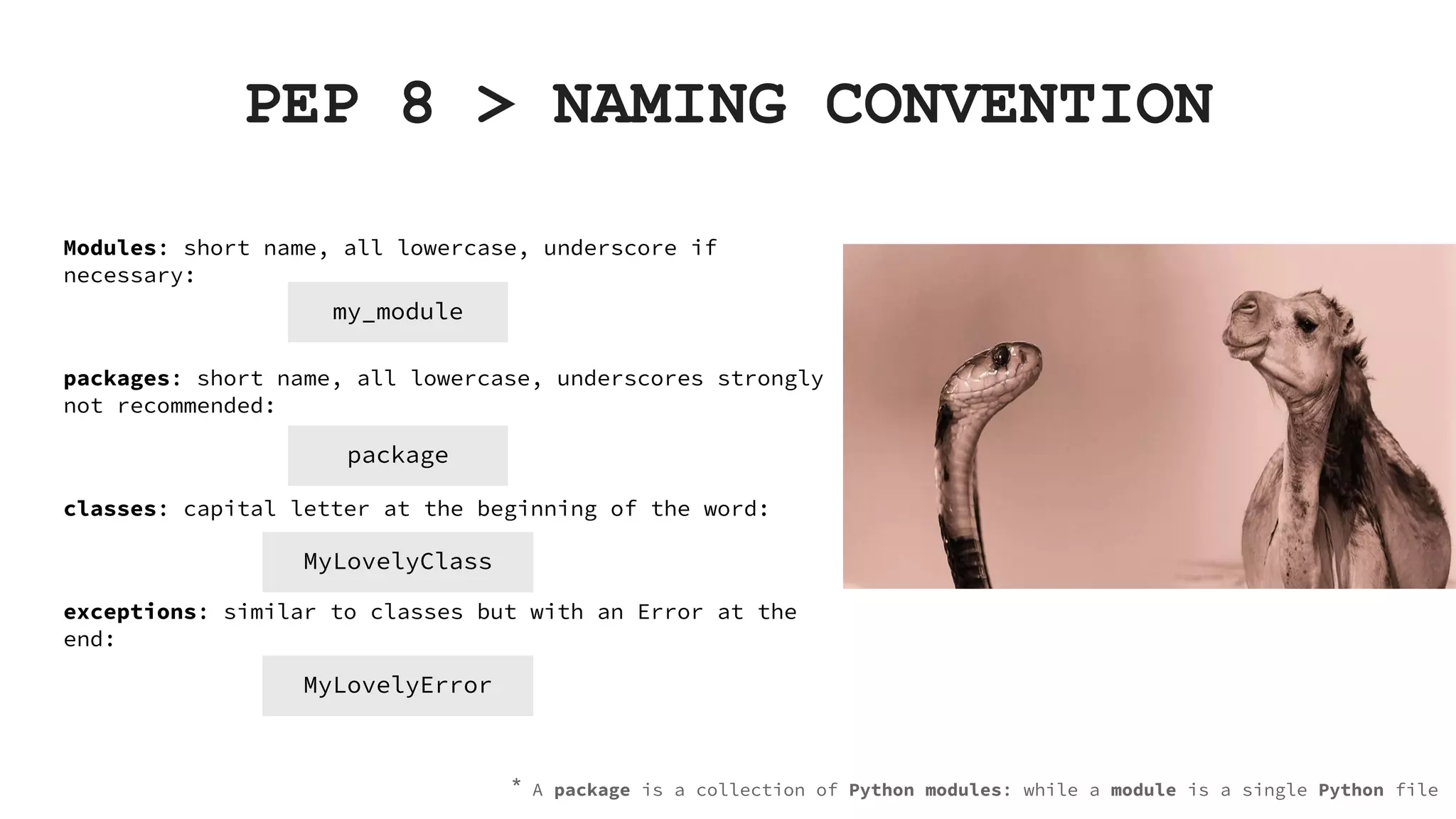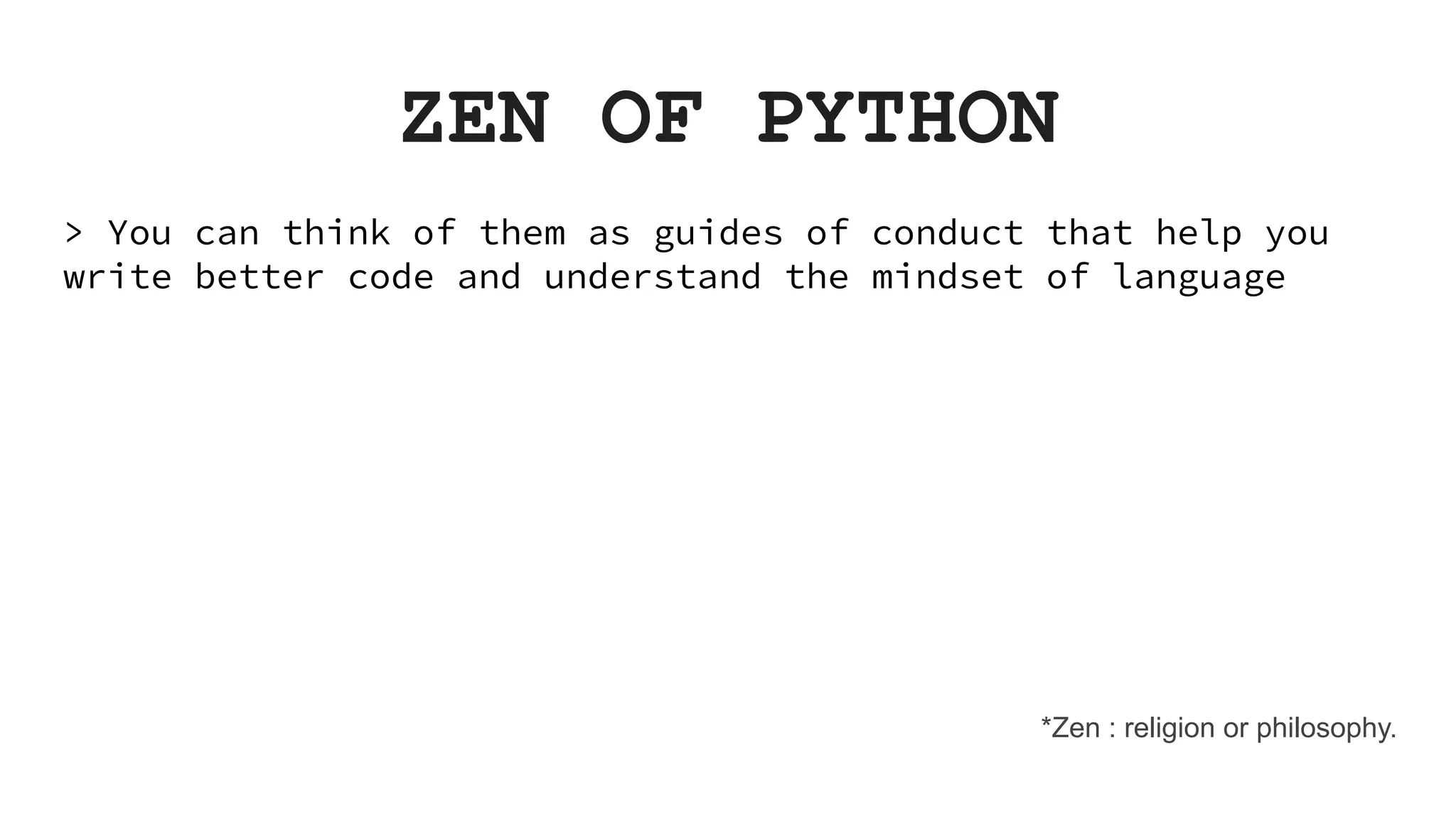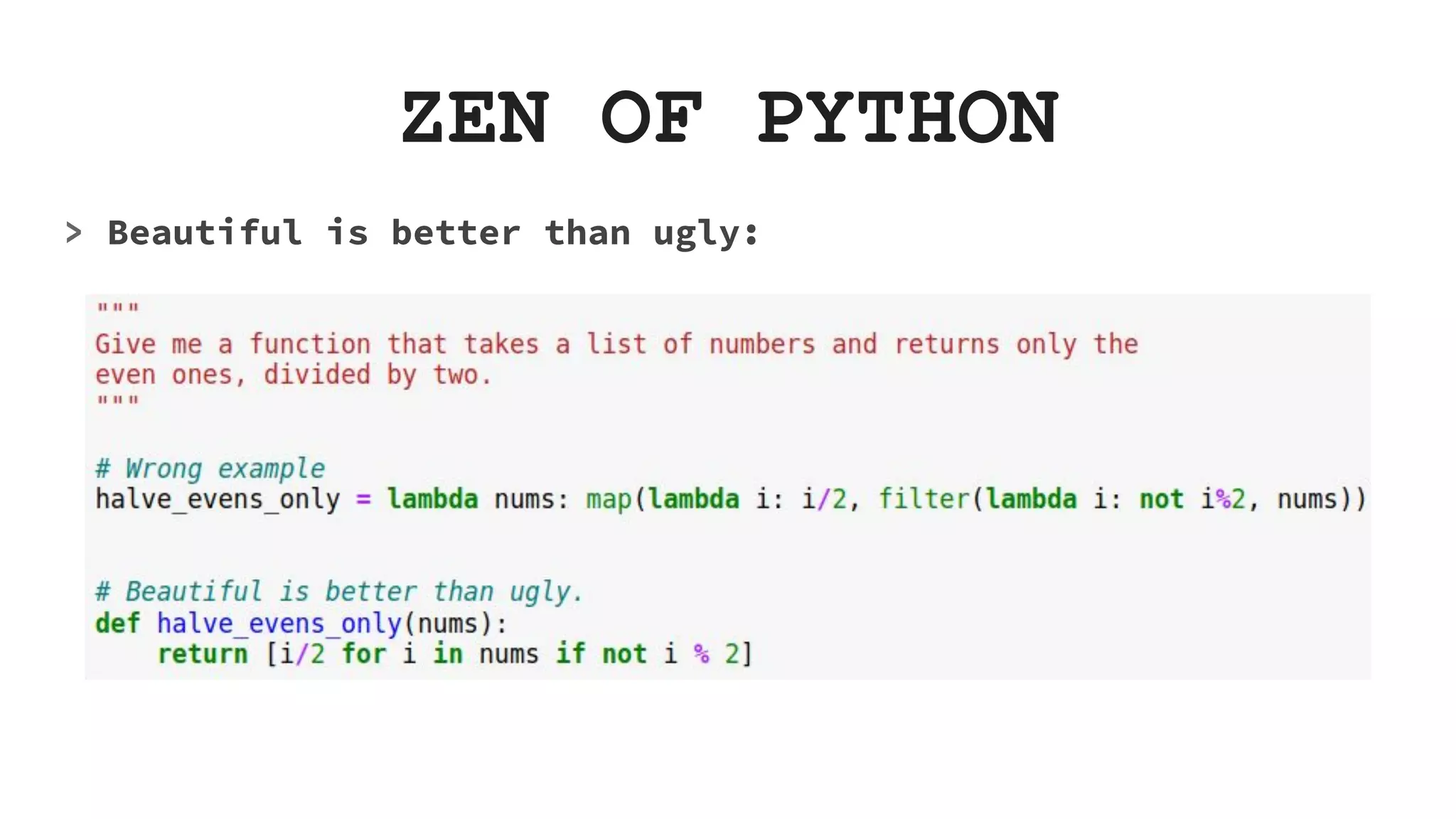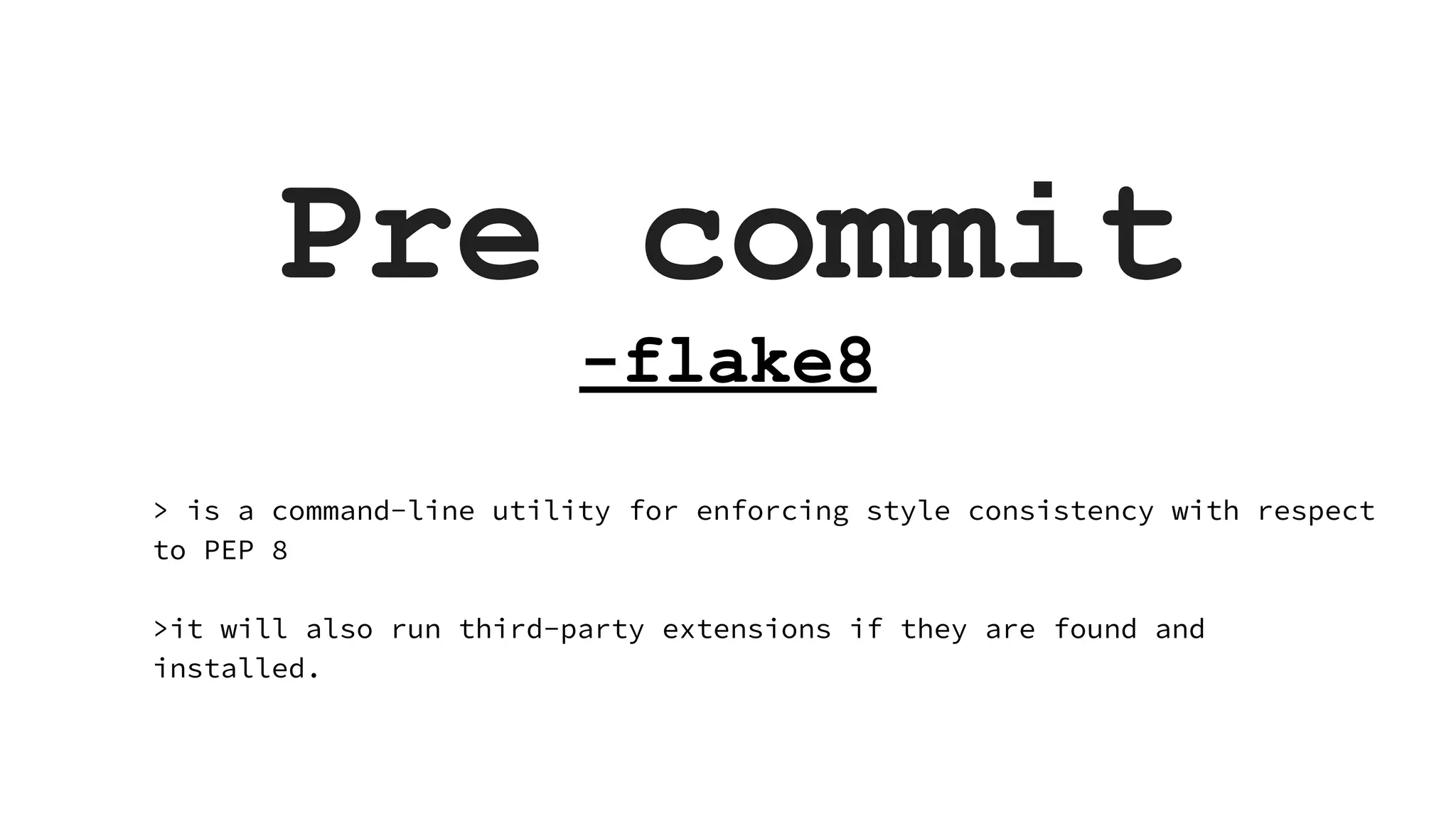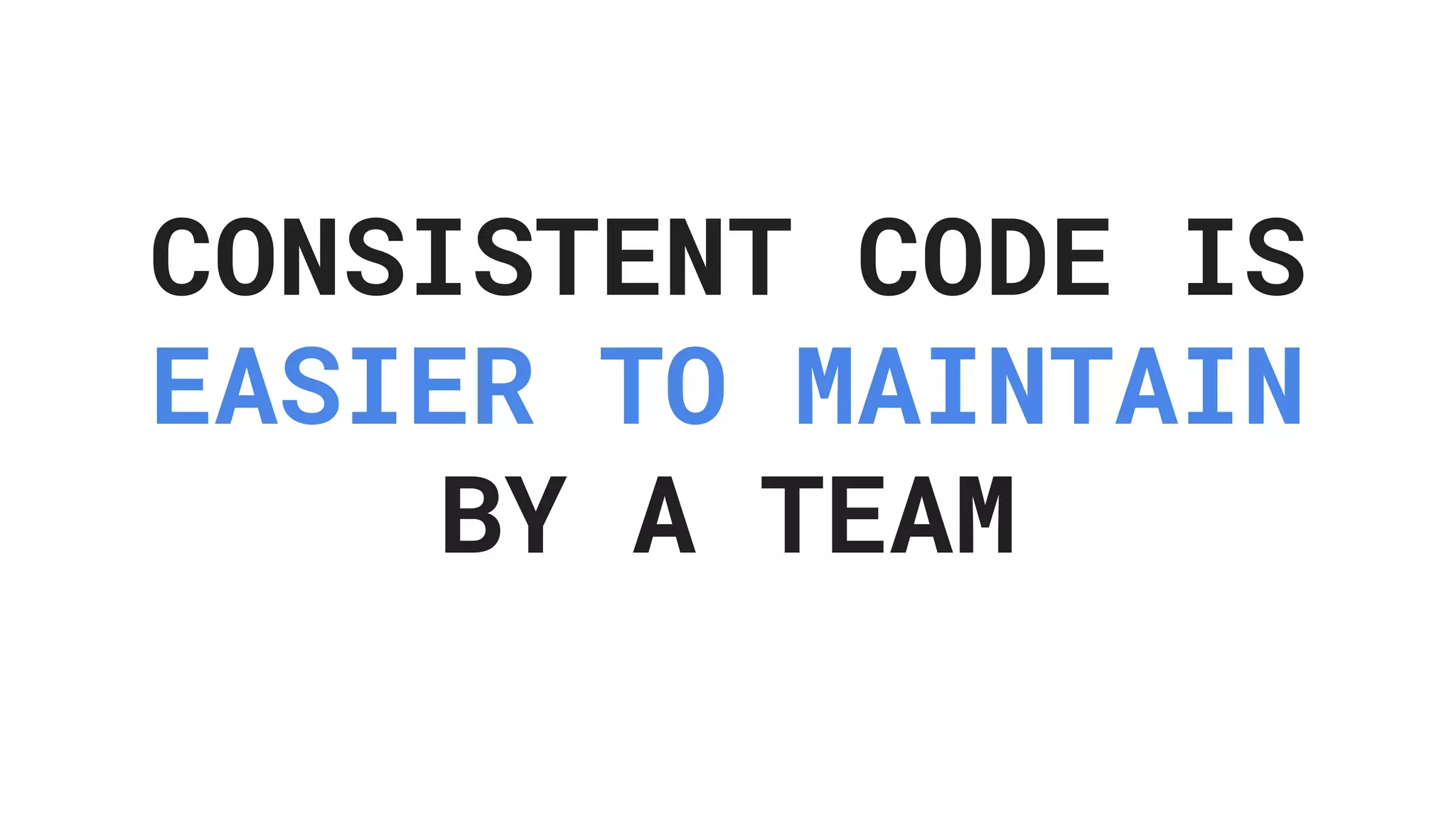This document discusses code reviews and tools to help with the code review process. It emphasizes that code reviews are important to find bugs and design flaws, improve code quality, and share knowledge between team members. Effective code reviews require consistent code style through guidelines like PEP 8 and tools like autopep8, black, and flake8. Code reviews should be a collaborative process done by peers to improve code, not to assign blame. Maintaining consistent code style and quality through automated formatting and linting tools and a peer review process helps large teams work together effectively.
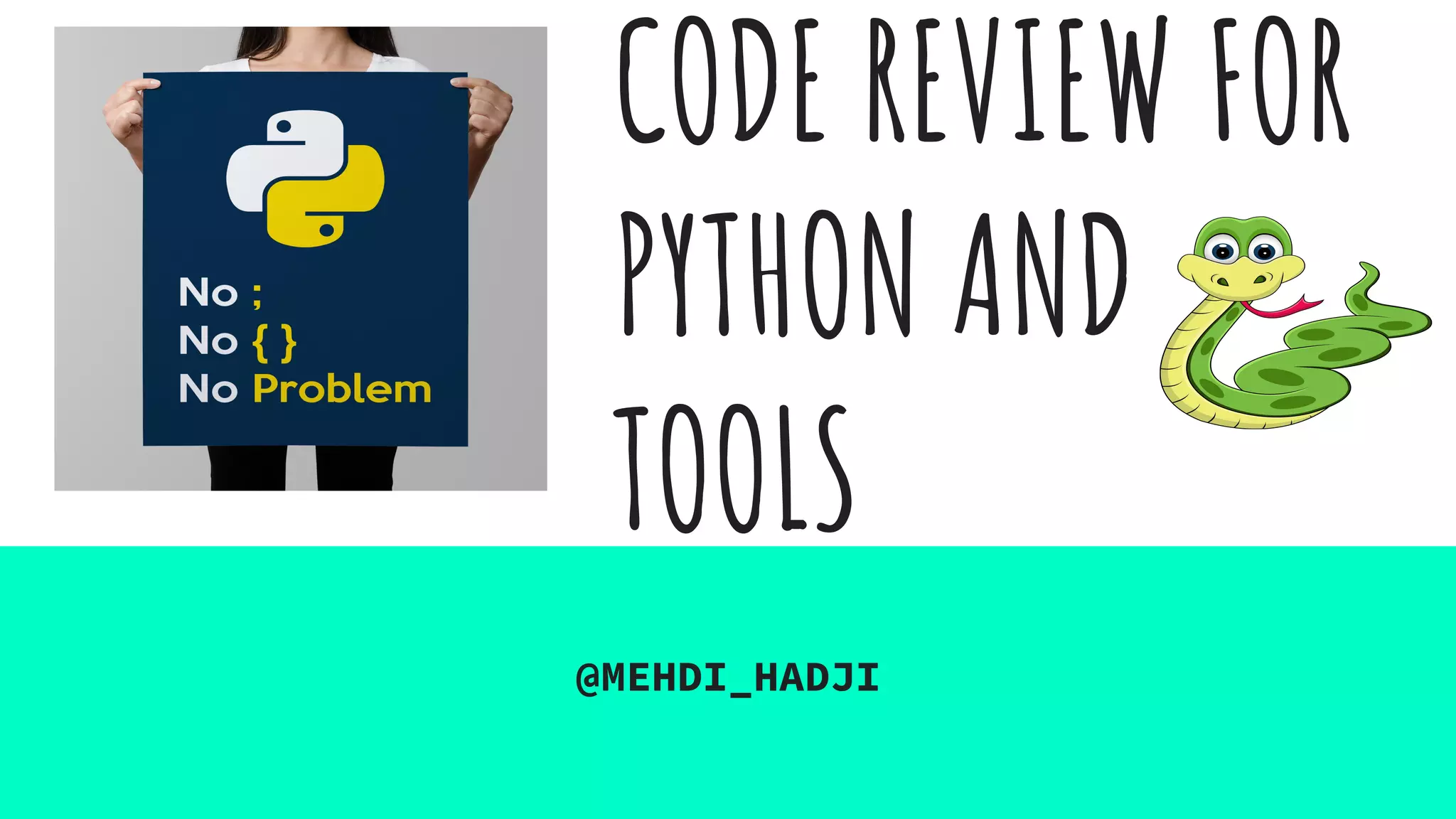

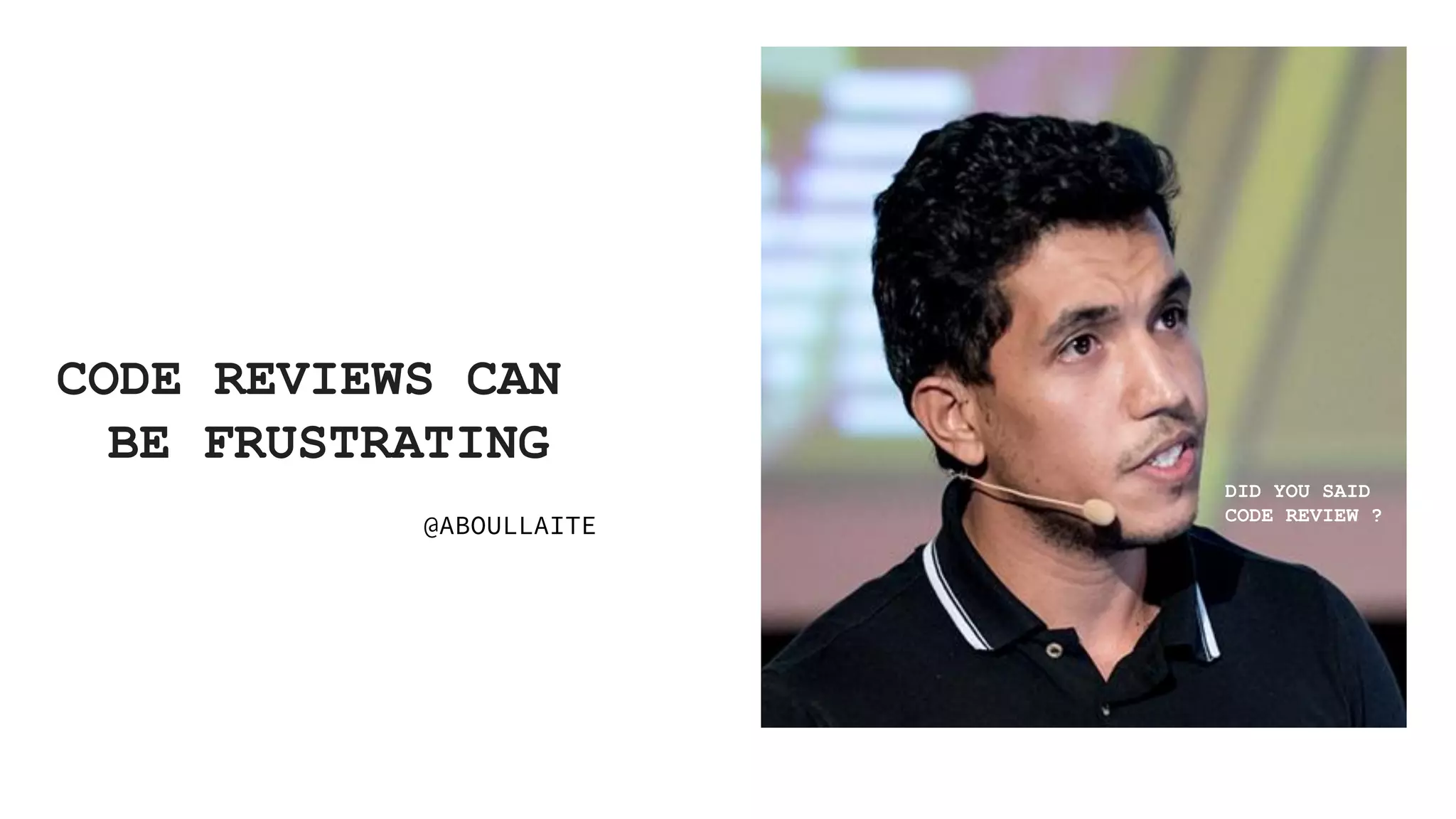
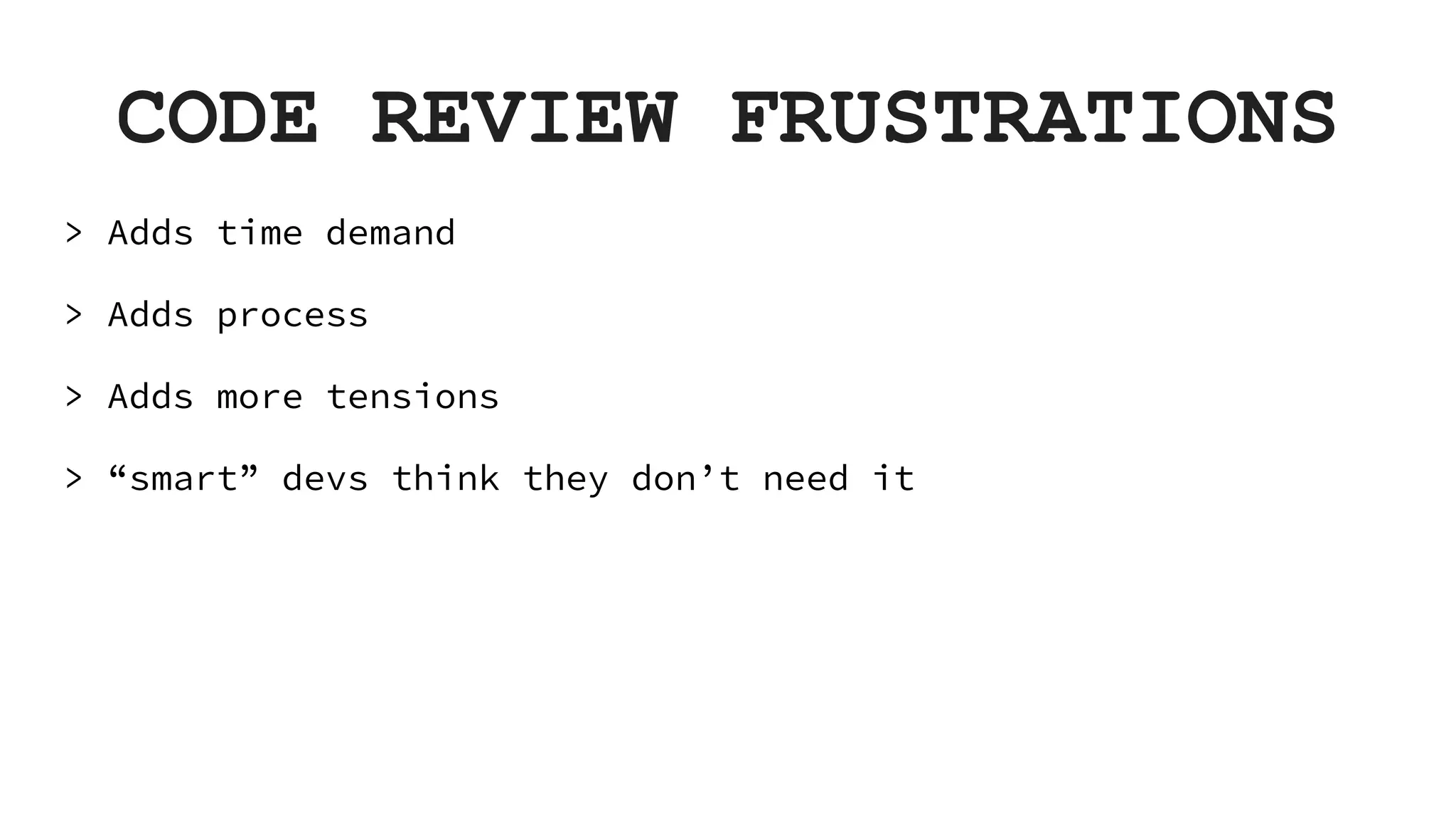
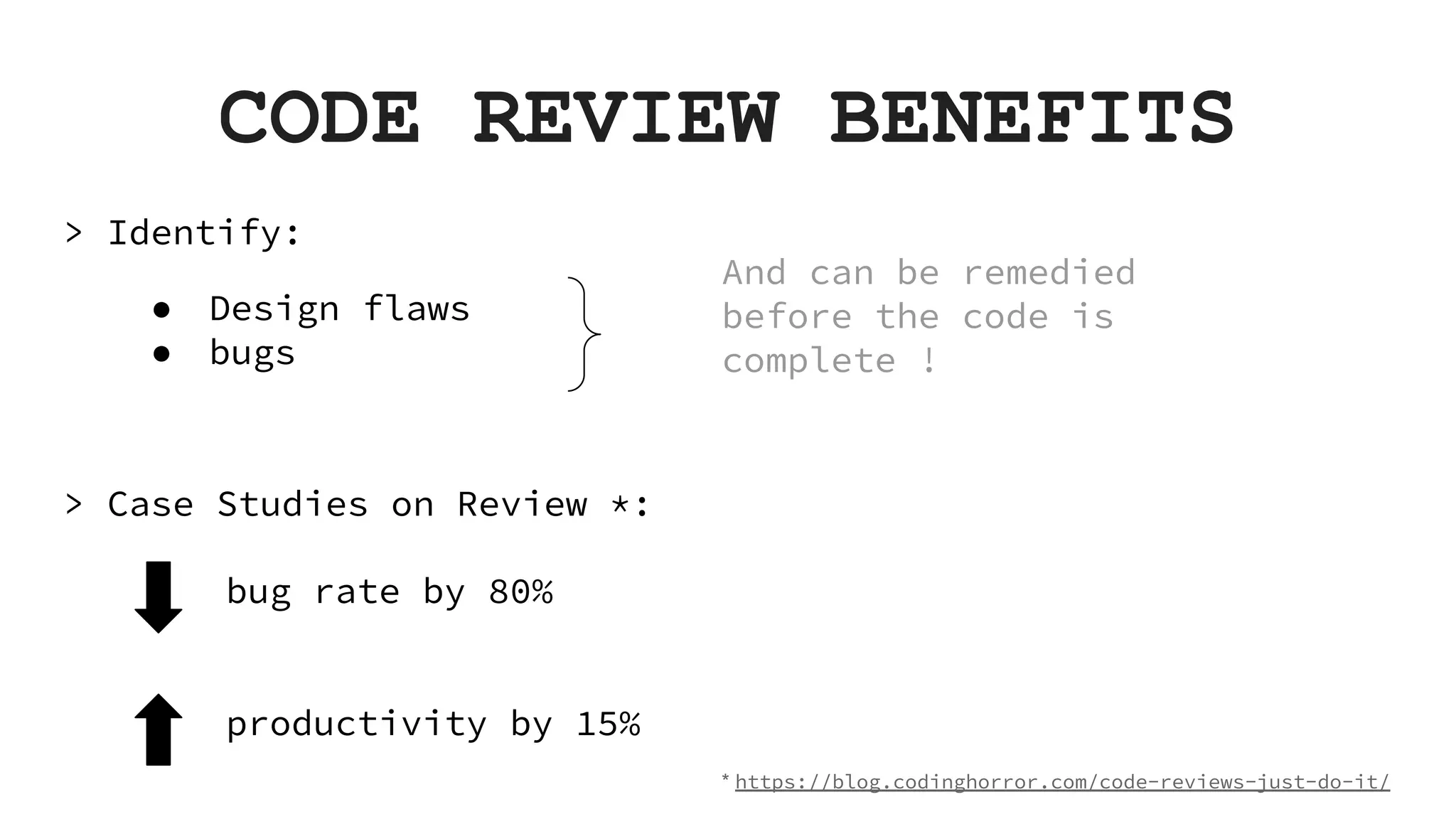
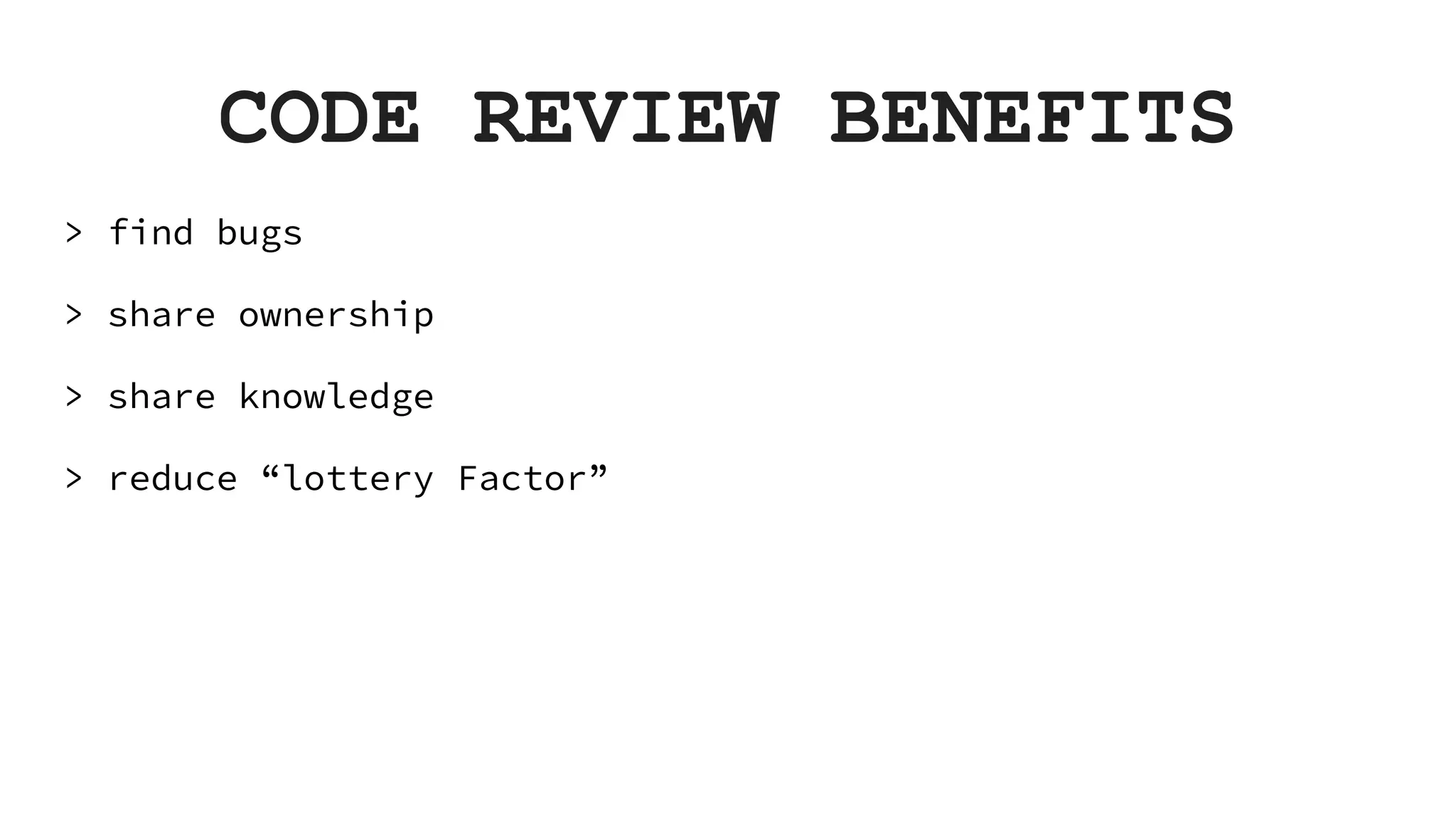


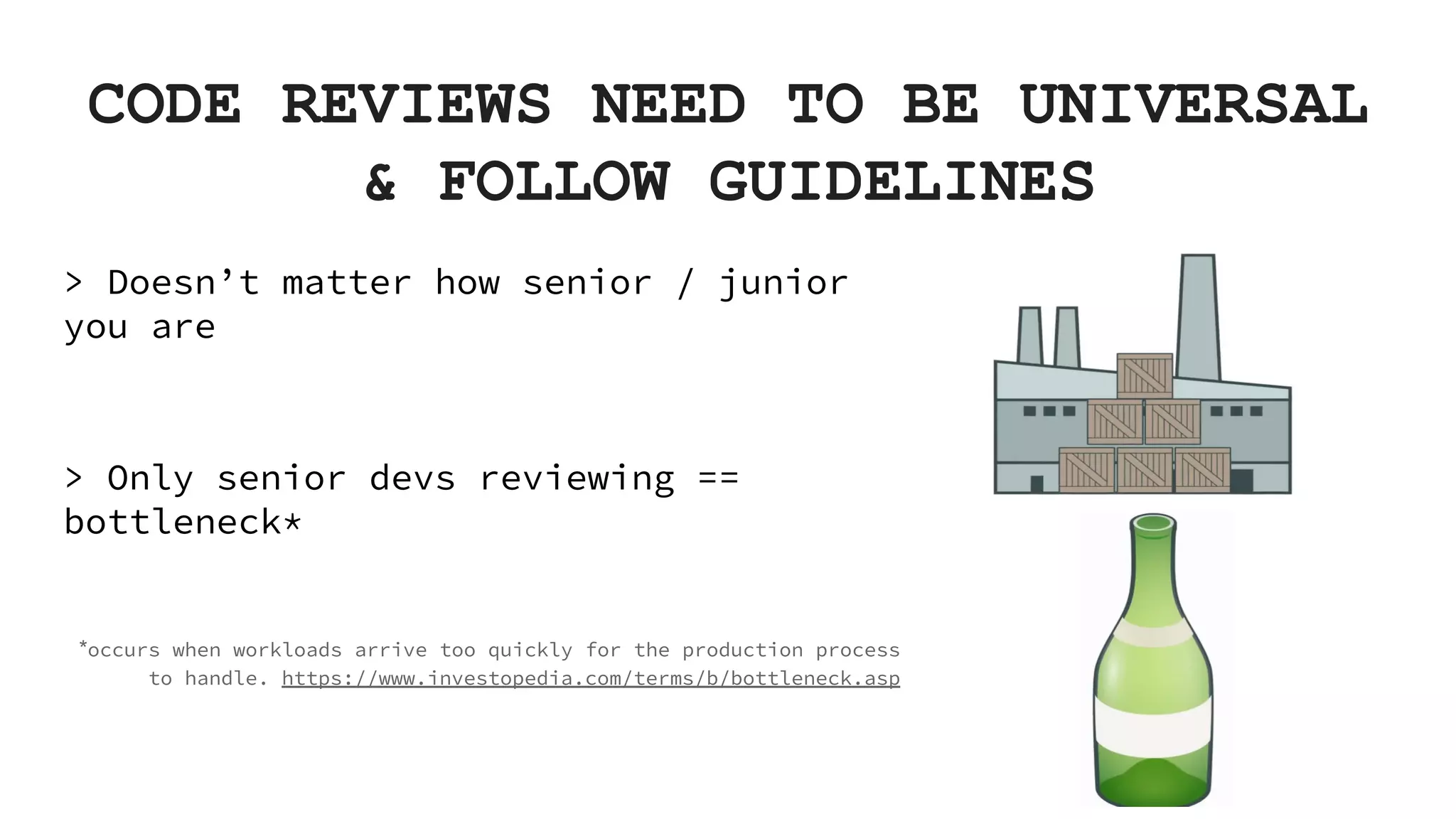
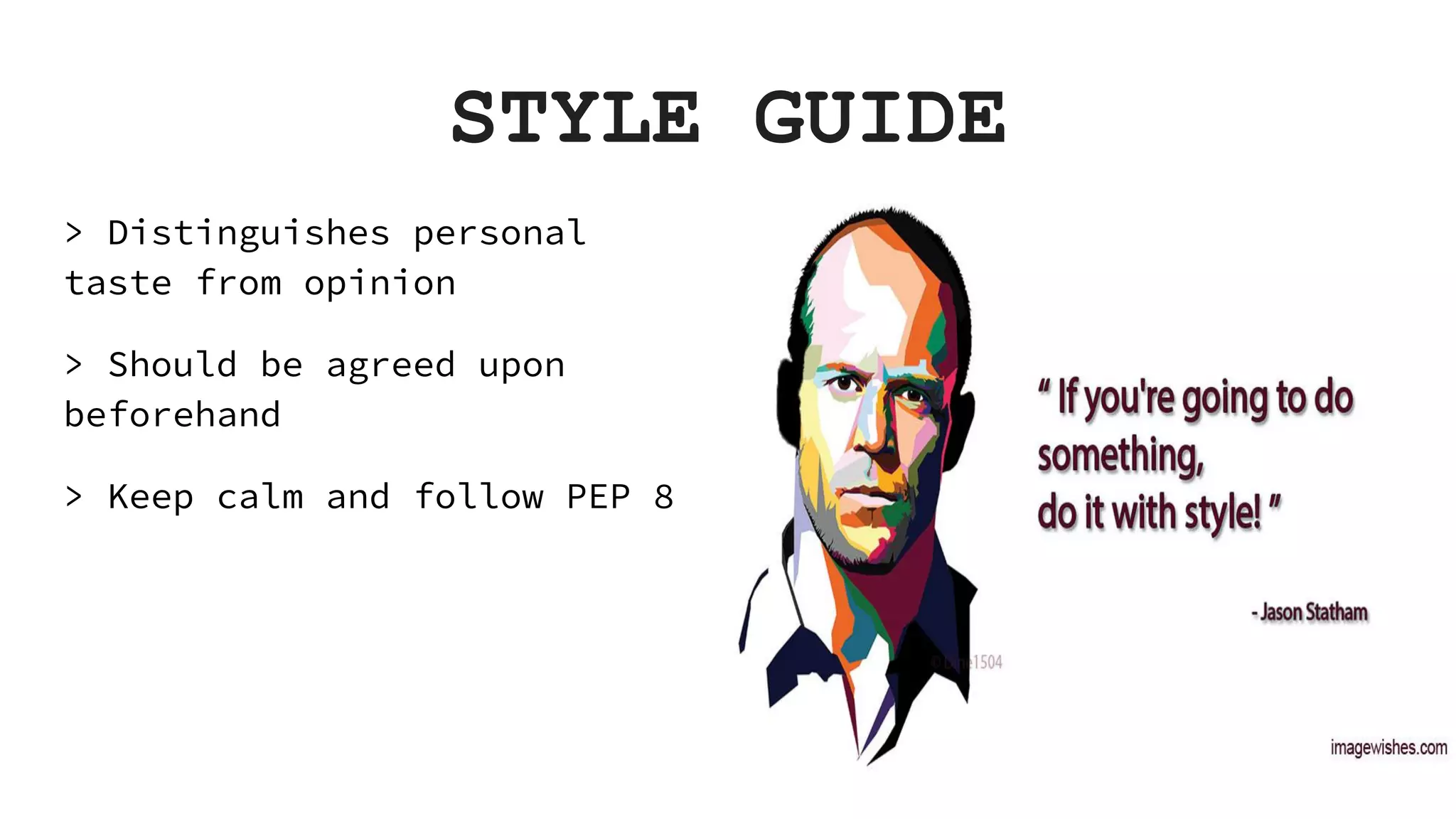

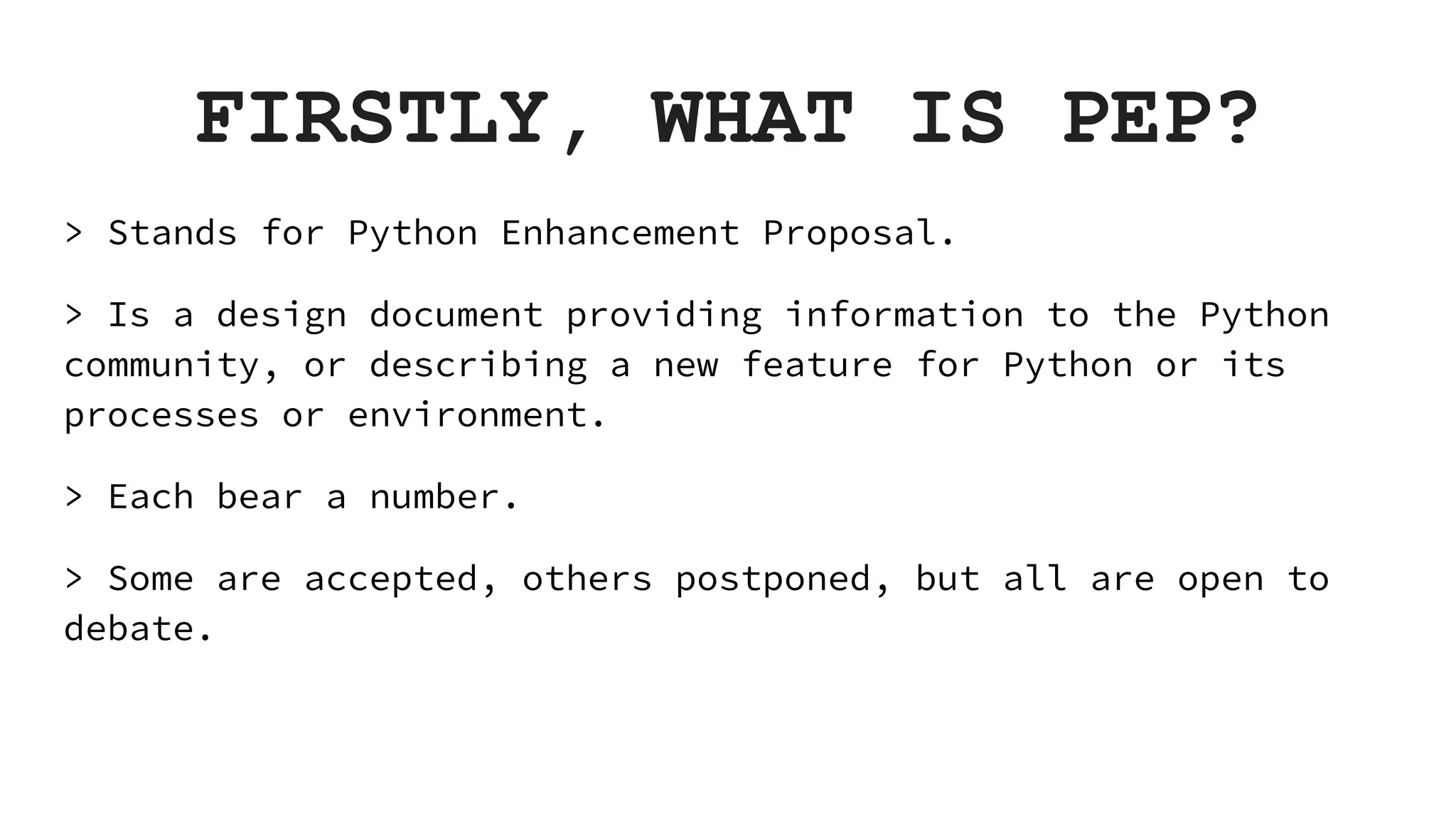


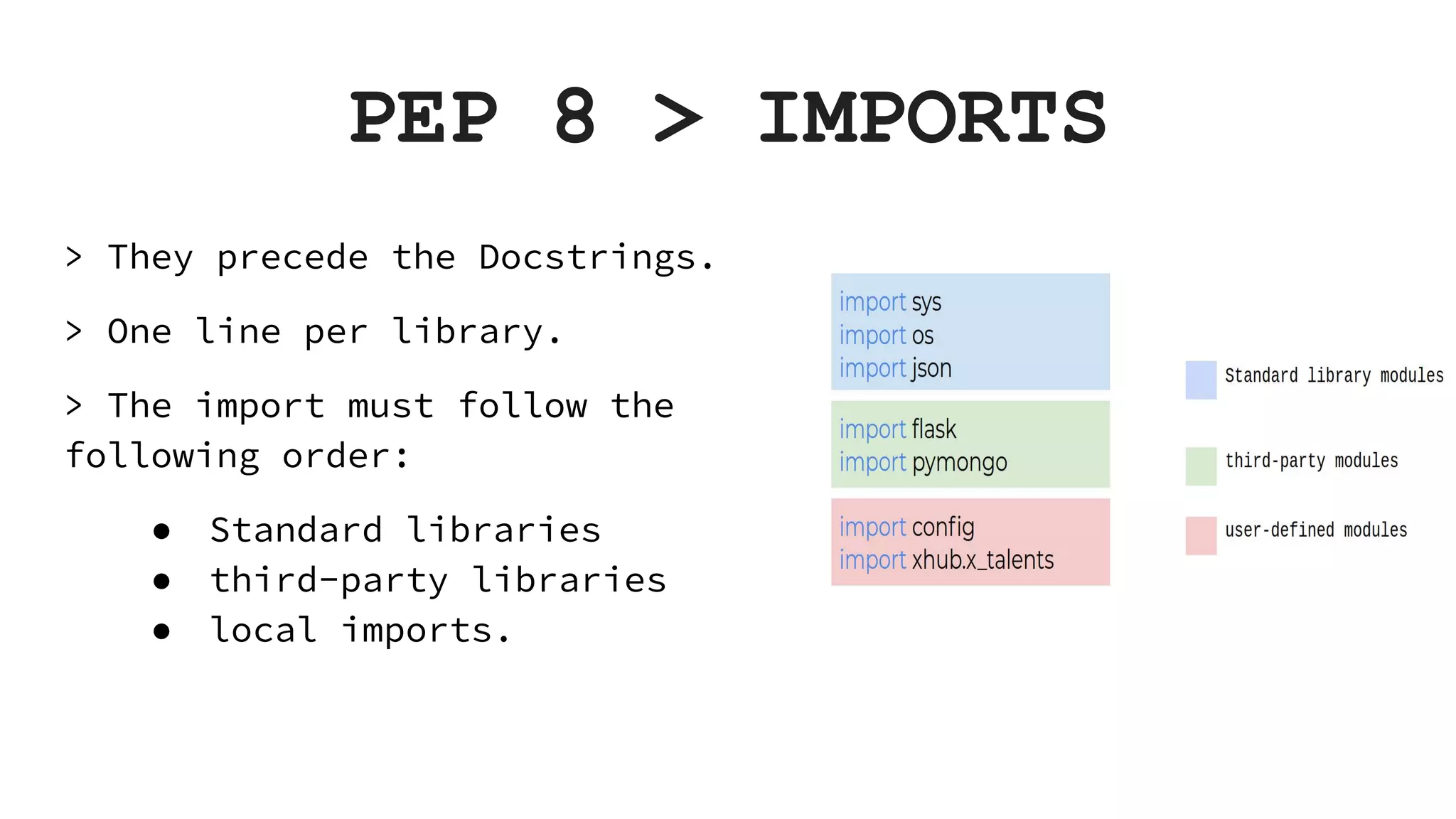

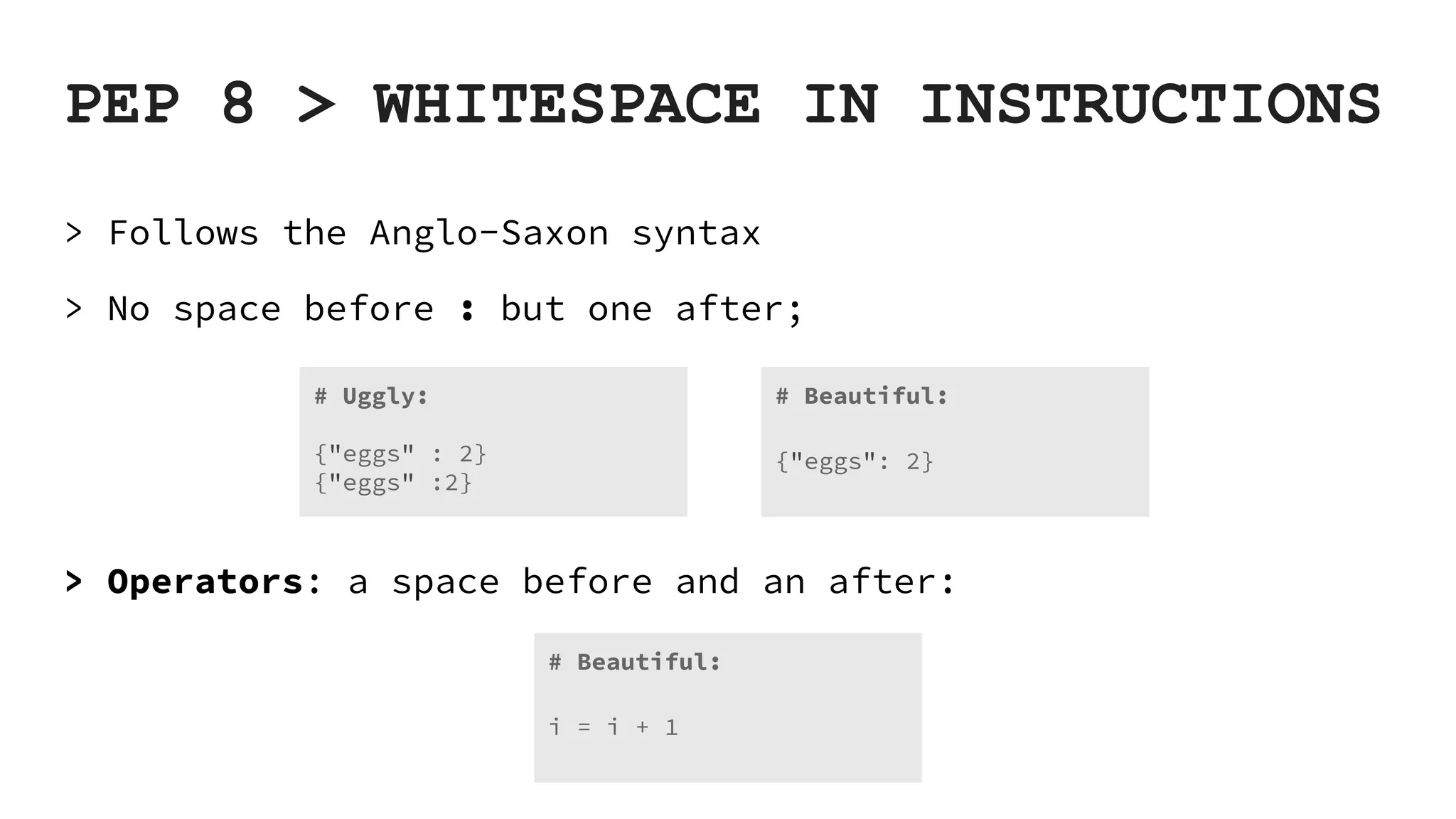
![PEP 8 > WHITESPACE IN INSTRUCTIONS > Parameter of a function: No spaces before and after an = sign when you assign a value. Example: > Immediately inside parentheses, brackets or braces: # Beautiful: def elephant(trunk=True, legs=4) # Beautiful: spam(ham[1], {eggs: 2}) # Uggly: spam( ham[ 1 ], { eggs: 2 } )](https://image.slidesharecdn.com/codereviewandtools-200610132253/75/code-review-style-guides-and-tools-for-pythin-18-2048.jpg)
